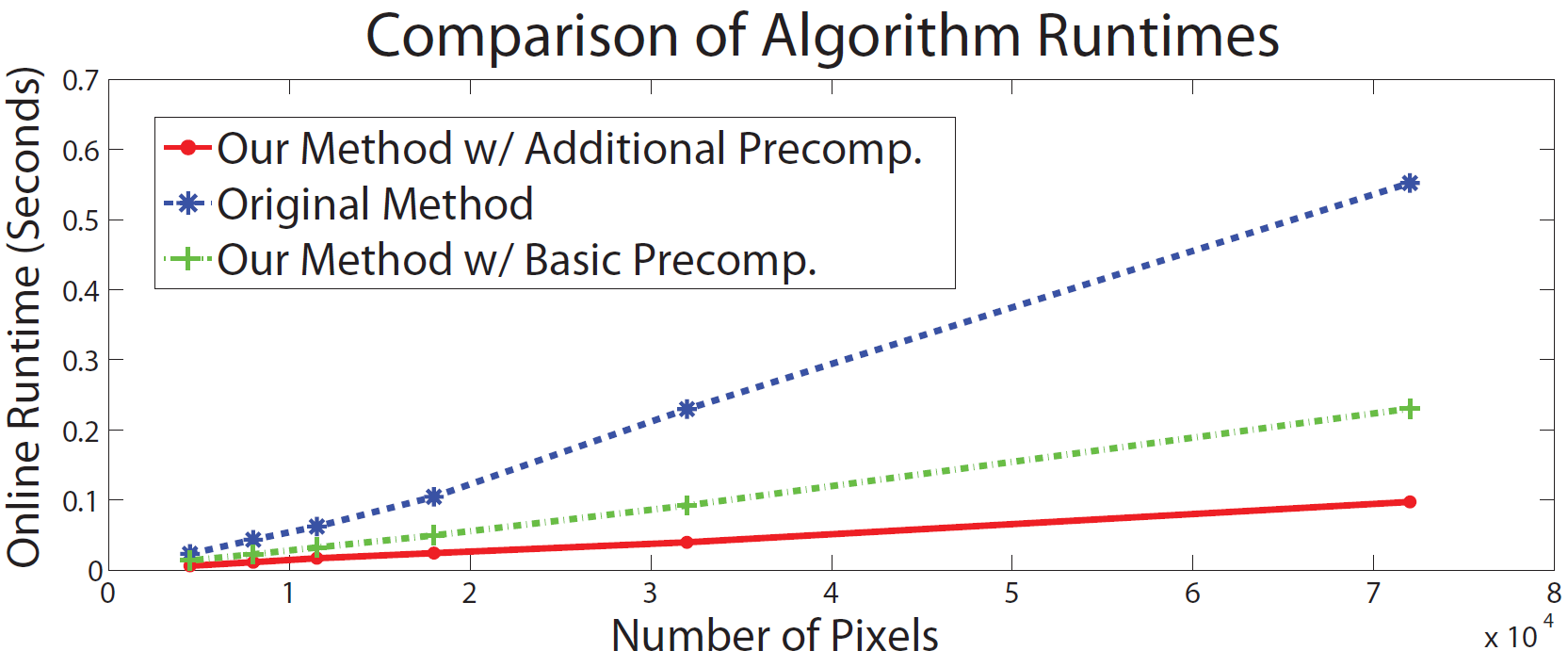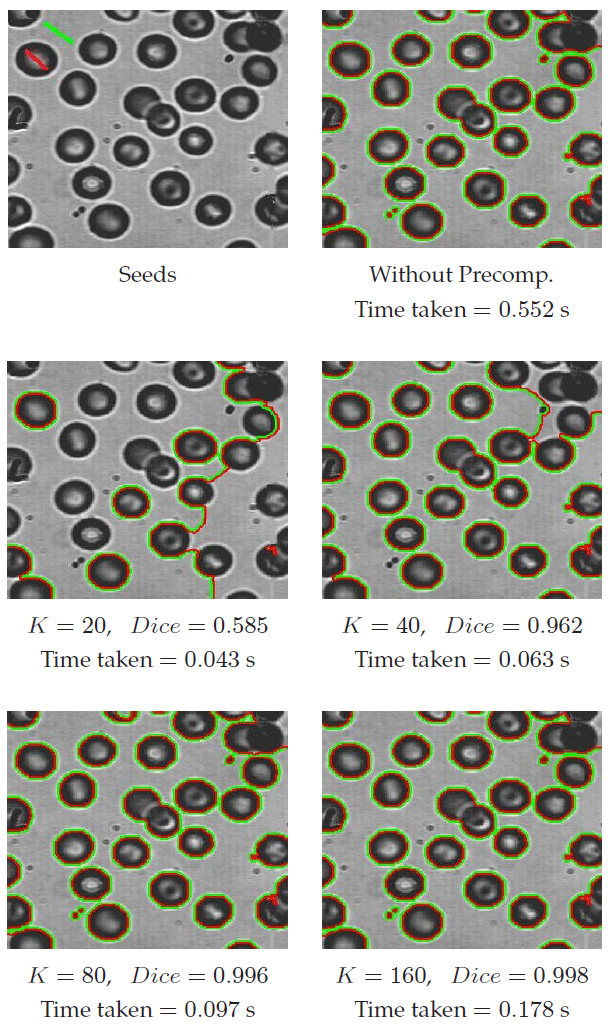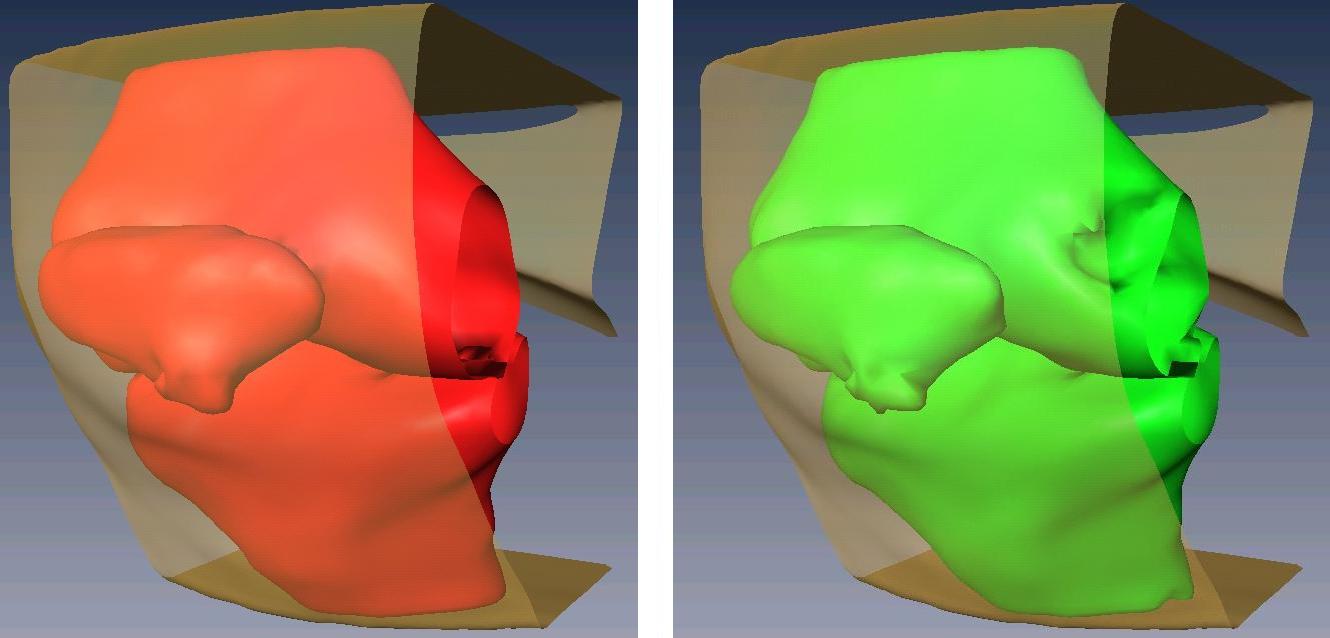About |
Overview Poster

Updating segmentation
results in real-time
based on repeated user
input is a reliable way
to guarantee accuracy,
paramount in medical
imaging applications,
while making efficient
use of an expert’s time.
The random walker
algorithm with priors is
a robust method able to
find a globally optimal
probabilistic
segmentation with an
intuitive method for
user input. However,
like many other
segmentation algorithms,
it can be too slow for
real-time user
interaction. We propose
a speedup to this
popular algorithm based
on offline
precomputation, taking
advantage of the time
images are stored on
servers prior to an
analysis session. Our
results demonstrate the
benefits of our
approach. For example,
the segmentations found
by the original random
walker and by our new
precomputation method
for a given 3D image
have a Dice’s similarity
coefficient of 0.975,
yet our method runs in
1/25th of the time.
[Back
to the top]
|
Publications
[Paper ,
Poster ,
Poster ,
BibTex ,
BibTex ]
Shawn Andrews, Ghassan Hamarneh, and Ahmed Saad. Fast Random Walker with
Priors using Precomputation for Interactive Medical Image Segmentation.
In Lecture Notes in Computer Science, Medical Image Computing and
Computer-Assisted Intervention (MICCAI), pages III:9-16, 2010. ]
Shawn Andrews, Ghassan Hamarneh, and Ahmed Saad. Fast Random Walker with
Priors using Precomputation for Interactive Medical Image Segmentation.
In Lecture Notes in Computer Science, Medical Image Computing and
Computer-Assisted Intervention (MICCAI), pages III:9-16, 2010.
[Report ,
BibTex ,
BibTex ]
Shawn Andrews, Ghassan Hamarneh, and Ahmed Saad.
Fast Random Walker with Priors using Precomputation for Interactive Medical
Image Segmentation.
Technical Report TR 2010-07, School of Computing Science, Simon Fraser
University, Burnaby, BC, Canada, June 2010. ]
Shawn Andrews, Ghassan Hamarneh, and Ahmed Saad.
Fast Random Walker with Priors using Precomputation for Interactive Medical
Image Segmentation.
Technical Report TR 2010-07, School of Computing Science, Simon Fraser
University, Burnaby, BC, Canada, June 2010.
[Back to the top]
|
Software |
The Fast Random Walker
is available for
download. You
can redistribute it
and/or modify it under
the terms of the GNU
General Public License
as published by the Free
Software Foundation;
either version 2 of
the License, or (at
your option) any later
version. We kindly ask
you to acknowledge the
use of this software and
cite our related paper(s)
(listed above) in your
publications and
presentations.
Download this software from:
here .
[Back
to the top]
|
Sample
Results
|
|
The figure below shows a comparison in runtime for images of increasing size
(number of pixels) for different methods. The original RW with priors is in
blue. Our proposed algorithm is in red.

The figure below shows the results achieved with our method in terms of accuracy
and speed up. Note for example in the bottom left subfigure how the online
runtime drops from 0.552 to 0.097 seconds when our precomputation method is
used, and the accuracy is suffers only marginally, having a 0.996 Dice
Similarity Coefficient.

The figure below shows the results achieved with our method on a 3D image of a
knee. Seeds were placed in only one of the 3 disconnected bones, so RW with
priors must be used to segment all of the bones. When our precomputation method
is used, the online runtime drops from 40.5 to 1.56 seconds, while a Dice
Similarity Coefficient of 0.975 is maintained.
[Back
to the top]

|
Contacts |
email us
PhD Student: Shawn Andrews |
|
PhD Student:
Ahmed Saad |
|
Principal Investigator:
Ghassan Hamarneh
[Back to the top] |
Credits |
Thanks to Leo Grady, whose work ours
extends, and whose Graph
Toolbox is a basis for our software. Leo Grady's Graph Toolbox is available
for download
here
and on his site.
[Back to the top]
|
|
|
|